Paneled vs. Stainless Steel Appliances
Paneled vs. Stainless Steel Appliances… What Should I Know?
Thinking about sprucing up your cooking space or upgrading your appliances? Then you’ve likely wondered about paneled vs. stainless steel appliances. Here’s what you should know.
1. What are paneled appliances and how do they differ from standard stainless steel appliances?
Paneled appliances are a popular choice for many homeowners because they allow you to seamlessly integrate your appliances into your kitchen cabinetry. Rather than having a freestanding stainless steel fridge or dishwasher, the front panels of paneled appliances are covered with the same wood or finish as your cabinets. This creates a super clean, custom-built look that can take your space up a level.
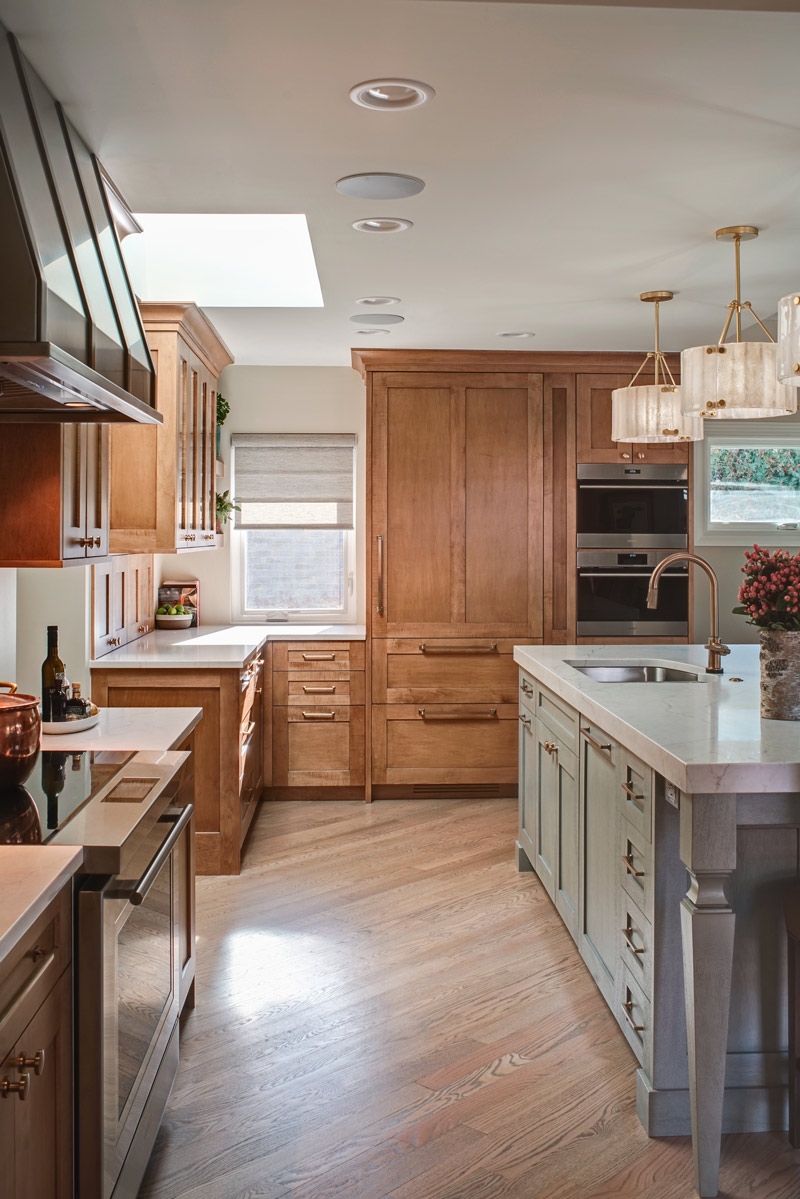
In this kitchen, the Sub-Zero fridge/freezer snugly fits into custom-stained maple to the right of the window, while the dishwasher blends into the painted mahogany to the right of the sink in the island. We even chose to panel the discreet column needed for support between the fridge and the microwave!
2. What are the benefits of choosing paneled appliances over stainless steel?
The main benefit of paneled appliances is the way they help your kitchen cabinetry/appliance walls look seamless and high-end. By blending in with the cabinetry, they minimize the visual impact of bulky appliances and create a streamlined, furniture-like appearance. They’re also great for smaller kitchens where you want to maximize the sense of open space. Many people just prefer the cohesive aesthetic compared to stainless steel.
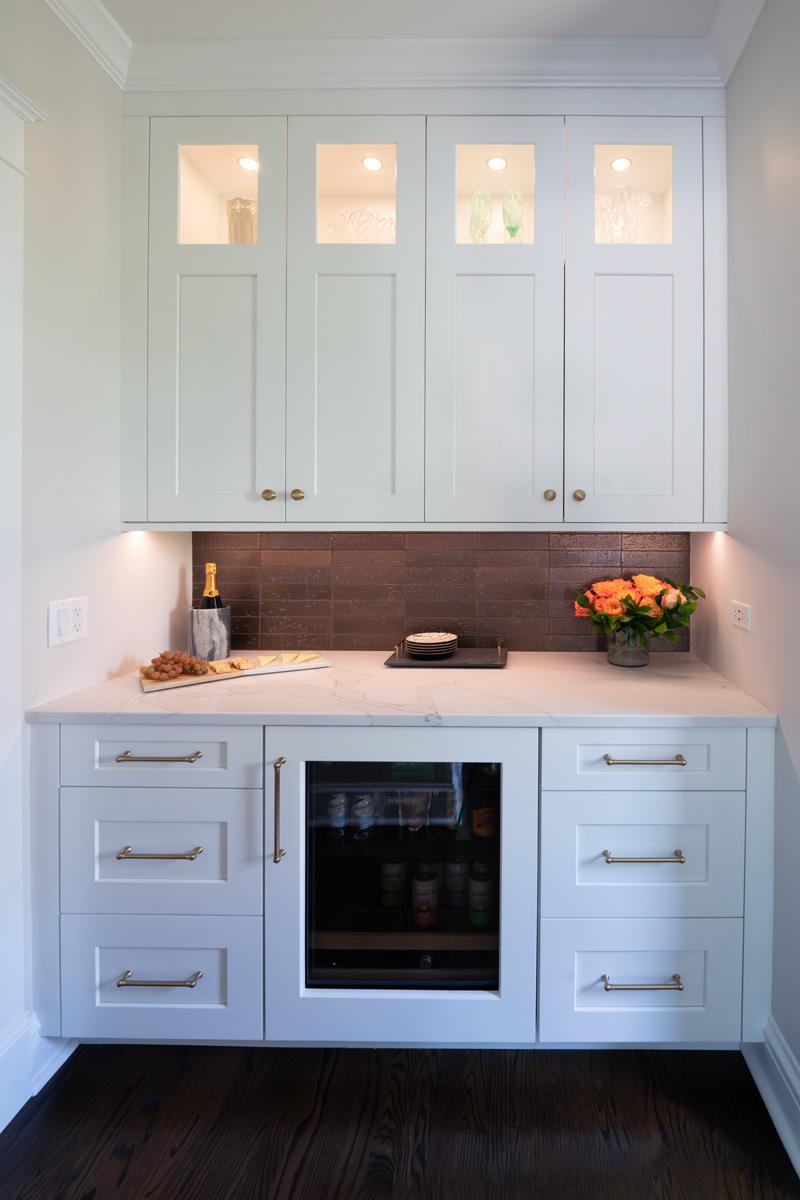
As part of an extensive kitchen renovation, this dry bar area was designed to exude chic sophistication. The under-counter beverage fridge was paneled to allow the gold hardware and tile details to take center stage. While stainless steel often lends an industrial vibe, this vision focused on creating a refined and elegant ambiance.
3. How do I choose the right style of paneled appliances to match my kitchen design?
Choosing the right style of paneled appliances really comes down to matching the wood tone and finish to the rest of your kitchen. Most cabinet brands offer coordinating paneled options, so it’s usually pretty easy to find a perfect match. You’ll also want to consider things like the door style – flush or raised panel, for example – to ensure it blends seamlessly. Your kitchen designer can provide guidance on the best options for your space.
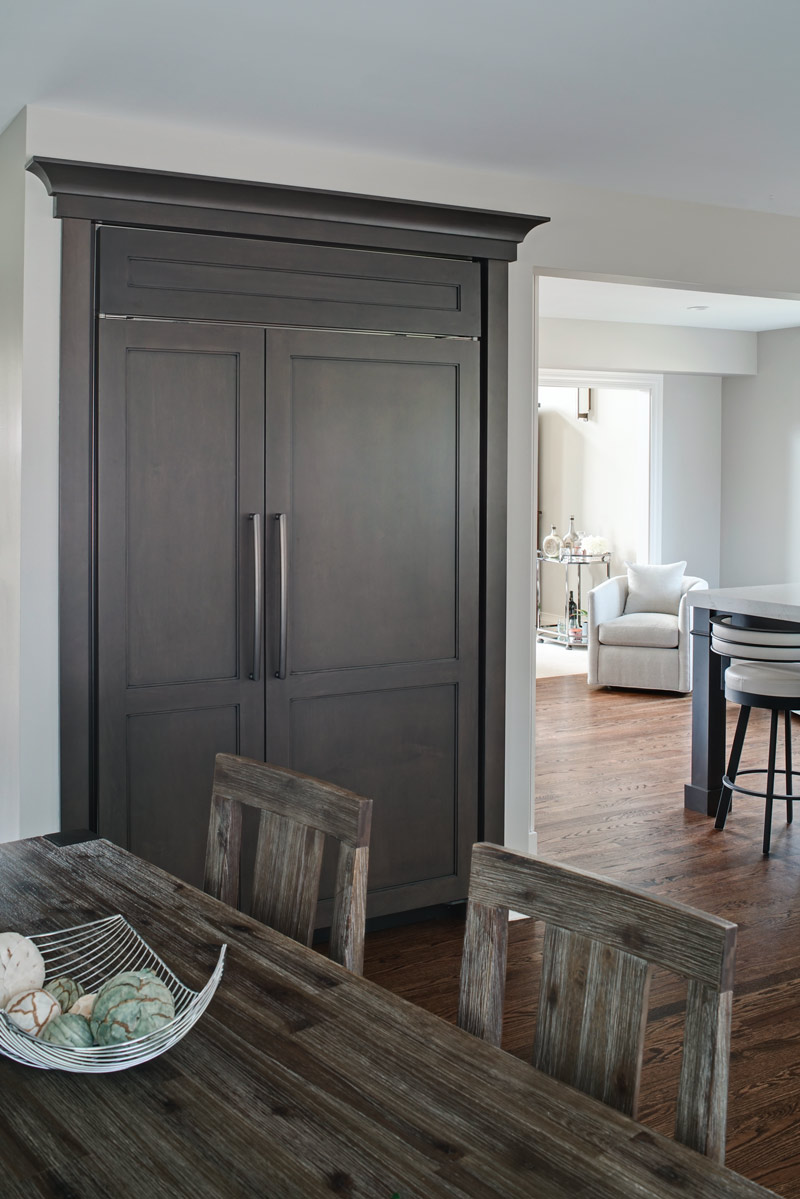
Senior Designer Samantha Schoell chose to panel this standalone fridge in a complementing wood tone, and contrast it from the rest of the white kitchen.
4. Are paneled appliances more expensive than standard stainless steel options?
Paneled appliances do typically cost a bit more than standard stainless steel models, but the price difference isn’t astronomical. You’re generally looking at an additional $500-$1,000 per major appliance. And the investment is often worth it to get that high-end, custom look. Remember, that resale value is usually higher for kitchens with premium, integrated appliances.
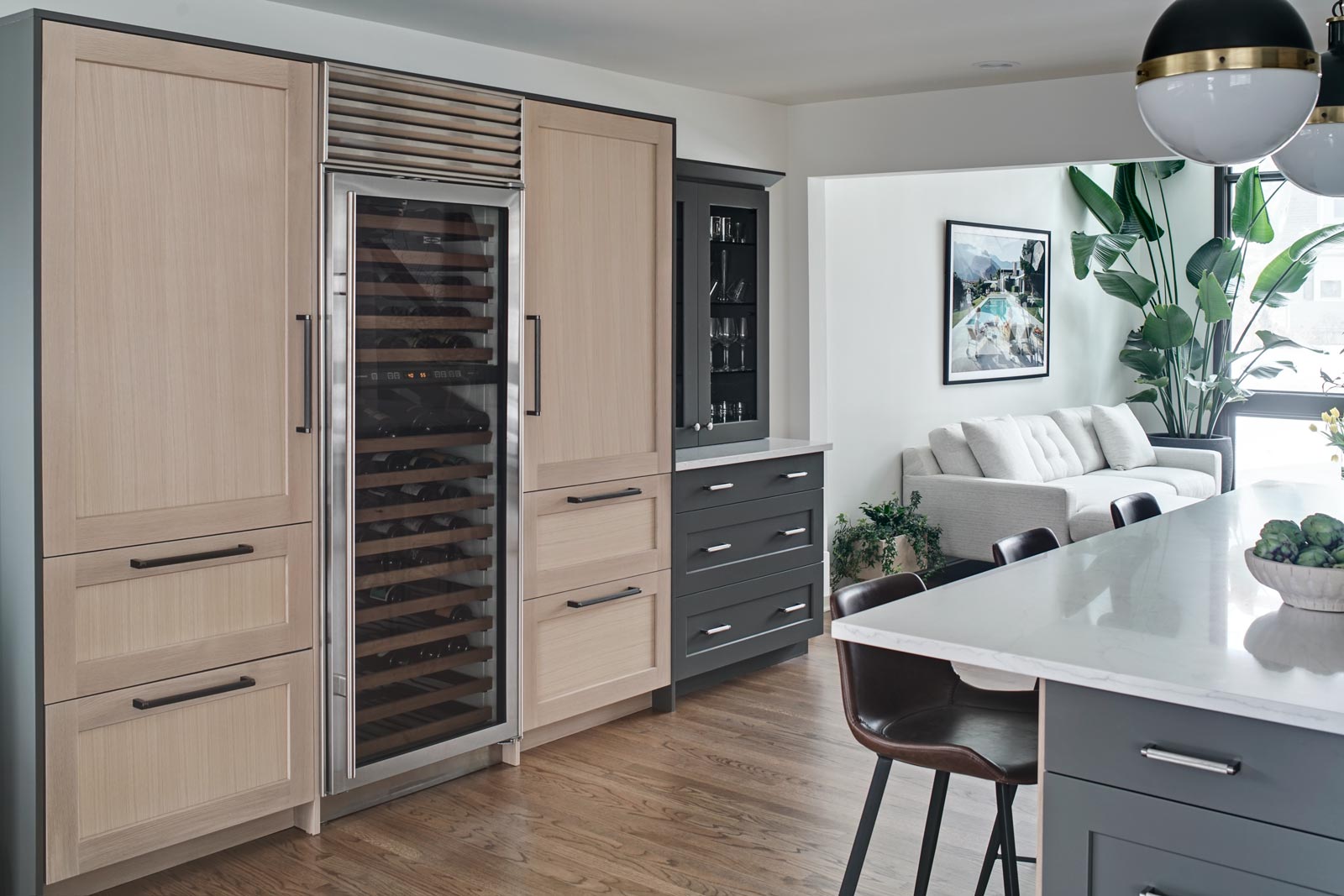
5. How do I care for and maintain paneled appliances to keep them looking their best?
Caring for paneled appliances isn’t too different from maintaining regular stainless steel. Wipe up spills promptly, use a gentle cleanser, and avoid abrasive pads or scrubbers that could scratch the finish. You may want to condition the wood panels periodically to keep them looking fresh. Otherwise, just treat your paneled appliances with the same care as the rest of your kitchen cabinetry.
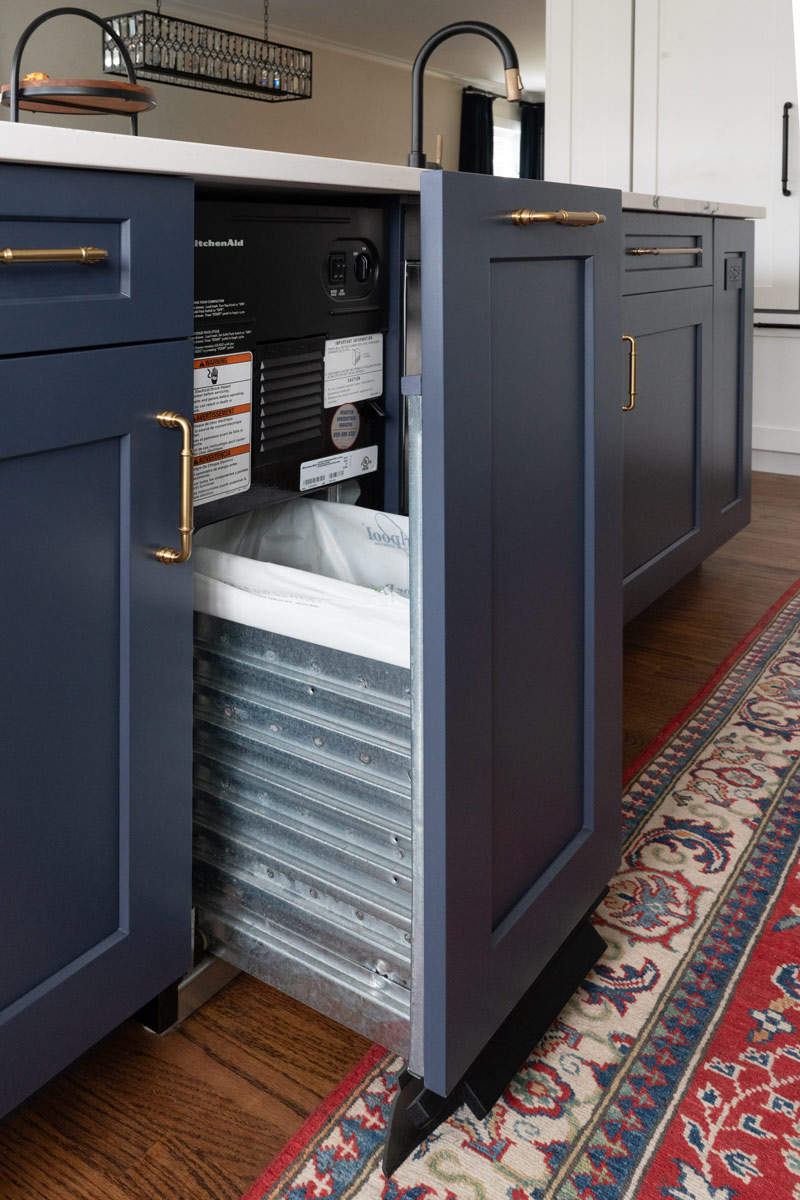
You can choose to panel many different appliances like: fridge/freezers, fridge drawers, dishwashers, warming drawers, ventilation hoods and even a trash compactor! See this entire project here.
So, paneled vs. stainless steel?
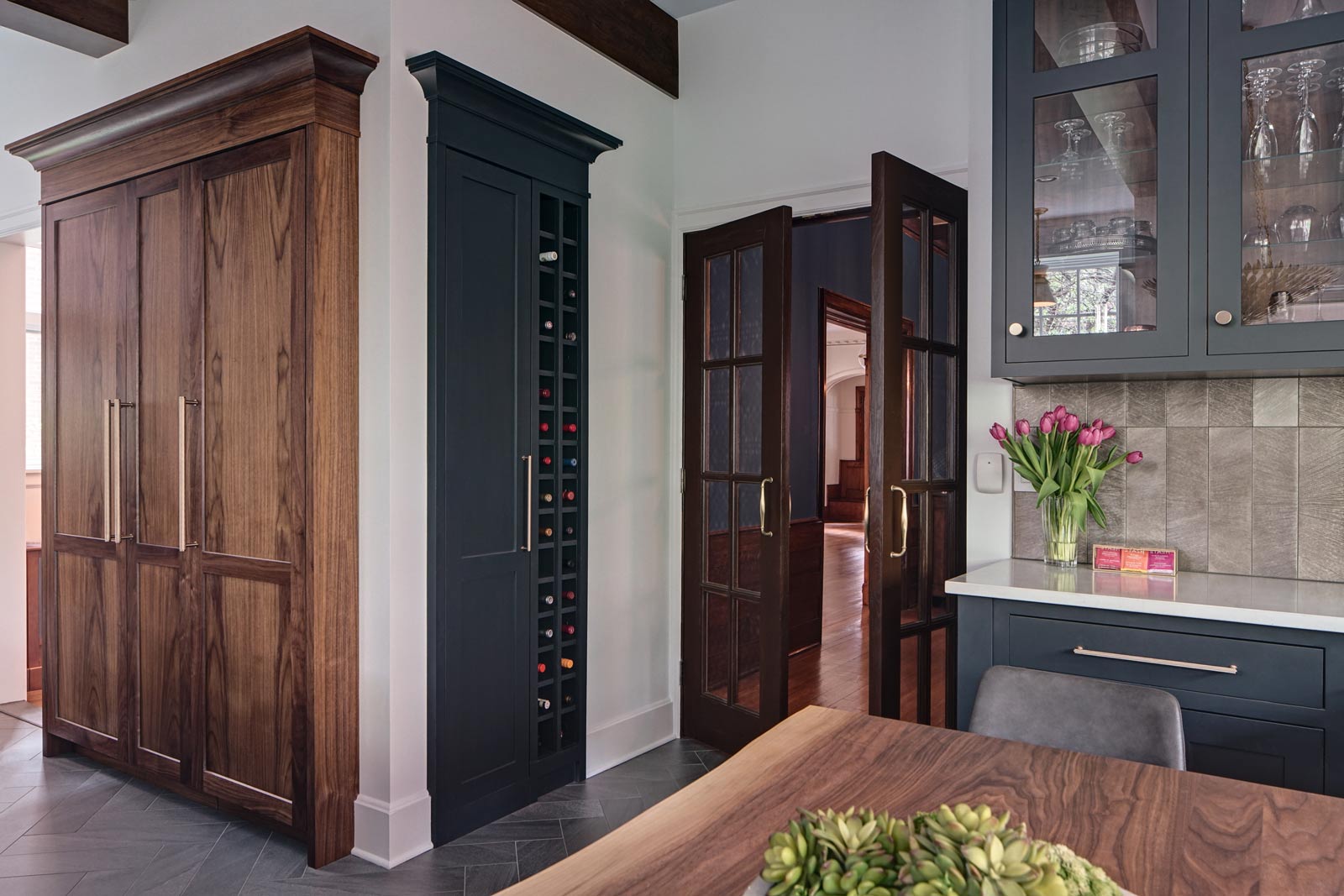
This vintage kitchen embraces paneled appliances, enhancing its character and charm. While stainless steel could’ve offered a modern flair, the paneled choice adds a timeless elegance.
Find out what would look best in your kitchen by speaking with one of our Senior Designers.
